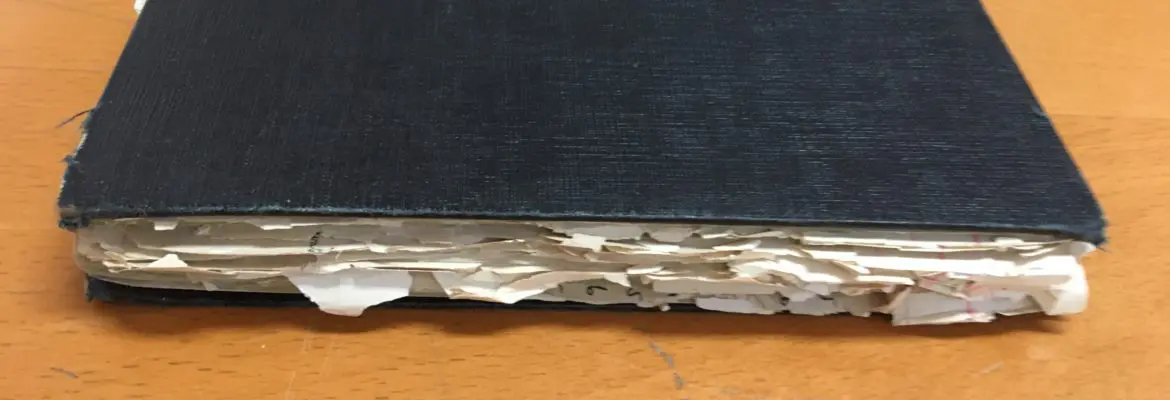
Archives & Conservation – Introduction
In April 2022 the Archives received a Documentary Heritage Communities Program (DHCP) grant from Library and Archives Canada to conduct conservation work on 25 of our registers that are in fragile condition. We’d like to share some information about preservation, conservation, and the work we’re doing to ensure the safe long-term storage and access to parish registers. Over the next five weeks we’ll touch on various aspects of preservation and conservation at both the parish level and in the Archives. Today we are going to provide an overview of Preservation and Conservation.
What is Preservation?
The mandate of the Archives is to collect and preserve the records of Synod, its officials, clergy, parishes, and organizations. The Archives holds parish registers that date to 1800 and diocesan records that date to 1839.
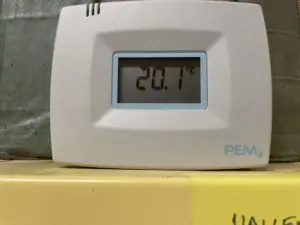
Preservation involves maintaining an object in a format that ensures the continued use and accessibility of the information provided. Preservation can be achieved by:
- providing a stable environment and proper supplies and equipment for storage
- developing and implementing policies for the safe use of materials
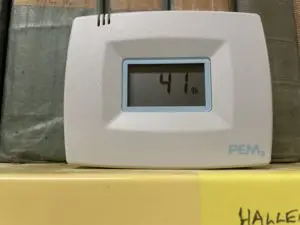
High temperatures, high humidity, or large fluctuations or changes in temperature and humidity can damage most materials found in the archives. High temperatures can accelerate the deterioration of archival records and objects. High humidity can lead to the growth of mold and mildew and affects the chemical makeup of items such as film, photographic prints, and audiotape or videotape. Although individual items have specific requirements for temperature and humidity, generally, a stable temperature of 21° Celsius (70° Fahrenheit) and a humidity range between 30 to 50% is recommended for proper storage.
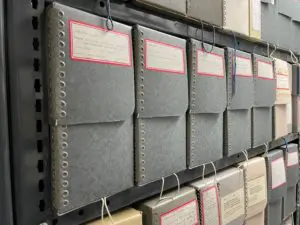
Exposure to natural or artificial light is also a concern for archives collections. Light can fade ink and paper and alter the appearance of photographs, paintings, and other types of artifacts. To reduce exposure to light, records are housed in archival storage boxes (often called Hollinger boxes).
Policies for the safe handling of archival materials include wearing cotton gloves when handling photographs, not using pen near archival records, and not writing on top of archival records. It is also imperative that food and drink are not consumed around archival records, as this can lead to damage from oils and spills, and can attract pests and insects.
Preservation also includes preparing for potential disasters such as floods and fires. We’ll discuss disaster preparedness in a future post.
What is Conservation?
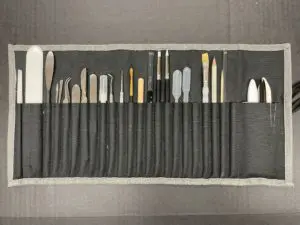
Conservation is an important part of preservation. Although preservation halts or slows down deterioration, some records and objects may be damaged or exposed to poor conditions prior to coming to the archives. Once in the archives, continued access by staff and researchers increases the risk of losing information due to the deteriorating condition of the records.
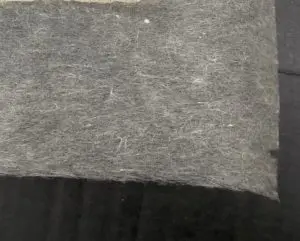
The goal of conservation is to stabilize and restore a record or object using established archives-safe materials and methods. This work helps to keep records in usable condition for as long as possible. Professional conservators are trained to apply conservation treatment methods and make recommendations for long-term preservation of materials in suitable environments. Thanks to our DHCP grant, the Archives has contracted conservator Vincent Dion of Conservation+Culture to conduct these crucial conservation treatments on our parish registers.